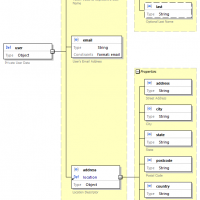
Building on Ethereum: Part 1 – Decisions
In this series, I’m discussing the phases of a project encompassing a non-trivial set of Ethereum smart contracts and the React/Redux application that communicates with them. The project, called In-App Pro Shop, aims to help Ethereum developers easily support in-app purchases as ERC-721 Non-fungible Tokens (NFTs). Part 1 – Decisions Part 2 – Functionality Part 3 – Setup Read More …




